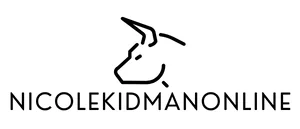Table of Contents
ToggleWhen you think about nurses, the image of a compassionate hero comes to mind, right? But behind that powerful façade lies a world of rigorous education that’s constantly evolving. Nurse education today isn’t just about memorizing anatomy or mastering bedpan logistics: it’s a dynamic arena shaped by technological advancements, changing healthcare needs, and an ever-growing emphasis on interprofessional collaboration. Whether you’re a seasoned nursing professional or just contemplating a career in nursing, understanding these trends is critical. So, let’s take a humorous yet insightful journey through the critical developments and innovations that are shaping nurse education today.
The Evolution of Nurse Education

Historical Context and Development
Nurse education has certainly come a long way since Florence Nightingale laid the groundwork in the 19th century. In those days, becoming a nurse didn’t require a degree, just some grit and a willingness to work long hours, often in appalling conditions. Fast forward to the present, and the educational landscape looks entirely different. Today, aspiring nurses typically pursue degrees in nursing, ranging from Associate’s degrees to Doctorates in Nursing Practice (DNP).
This shift has empowered nurses with both knowledge and skills, creating a more competent and confident workforce ready to tackle complex healthcare challenges. Also, continuing education has become a staple for nursing professionals, allowing them to stay updated on the latest medical advancements and best practices.
Current Trends in Nurse Education
In the modern era, nurse education has shifted towards a more comprehensive approach, emphasizing critical thinking, evidence-based practice, and patient-centered care. One prominent trend is the integration of technology in the curriculum. Virtual simulations and online learning platforms have made education more accessible, allowing students to engage in practical, hands-on experiences from the comfort of their homes. Not only does this enhance learning, but it also prepares nurses for the high-tech landscape of today’s healthcare system.
The Role of Technology in Nursing Education
Simulation and Online Learning
Technology isn’t just a buzzword: it’s a revolution in nursing education. Simulation labs are popping up in nursing schools like popcorn in a microwave. These labs provide a safe space for students to practice skills without the fear of harming real patients. Imagine being in a scenario where you can code a patient or manage a complex case in a controlled environment. This level of immersive learning builds confidence and competence.
Online learning platforms have also transformed the landscape. Students can now complete coursework and even participate in virtual simulations from anywhere. Imagine juggling family obligations and work while still advancing your education. Online forums and discussions ensure that students can collaborate and learn from one another, even if they’re miles apart.
Learning Management Systems and Educational Tools
Accreditation and Quality Standards in Nursing Programs
With great power comes great responsibility – and nursing schools are no exception. Accreditation ensures that nursing programs meet high educational standards, providing students with quality education that prepares them for the rigors of the profession. Accreditation bodies like the Commission on Collegiate Nursing Education (CCNE) and the Accreditation Commission for Education in Nursing (ACEN) scrutinize these programs to maintain their integrity.
The Importance of Clinical Experience
While theory plays a crucial role in nurse education, clinical experience is the golden ticket. Students get the chance to apply their knowledge in real-world settings, enhancing their clinical judgment and patient care skills. The combination of classroom learning and clinical practice creates a holistic educational experience that is essential for producing competent nurses.
Challenges Facing Nurse Education Today
Faculty Shortages and Their Impact
Even though advancements, nurse education is facing a few roadblocks. One of the significant challenges is the shortage of qualified faculty. With an aging workforce and increased enrollment in nursing programs, many institutions struggle to provide enough qualified instructors. This shortage directly affects the quality of education and the number of nurses entering the field.
Adapting to Changes in Healthcare Needs
Also, healthcare needs are evolving rapidly, demanding that nurse education keeps pace. The rise of chronic illnesses, the importance of mental health care, and the need for culturally competent care all require adjustments in curricula. Nursing schools must remain agile and proactive, continuously revising their programs to address these emerging demands.
Future Directions for Nurse Education
Innovative Curriculum Development
Looking towards the future, innovative curriculum development is key. Programs are increasingly incorporating interdisciplinary approaches, blending nursing education with other healthcare disciplines. This not only fosters collaborative care but also equips students with knowledge from various fields, preparing them for the intricacies of modern healthcare.
Interprofessional Education and Collaboration
Interprofessional education is another trend gaining traction. By participating in shared courses and clinical experiences with students from different healthcare disciplines, future nurses will be prepared to work in teams, which is crucial in providing comprehensive patient care. This collaboration enhances communication skills, fosters mutual respect, and eventually leads to improved health outcomes.




